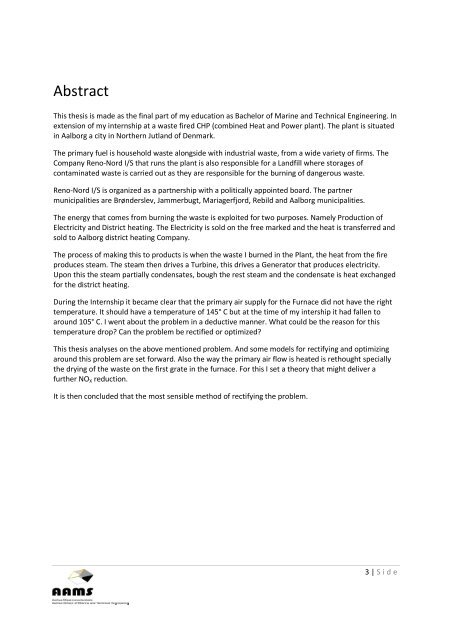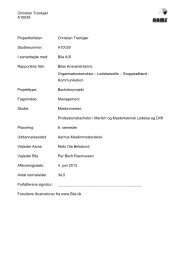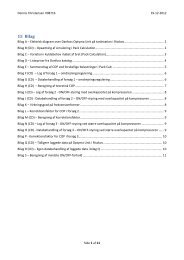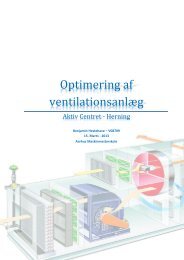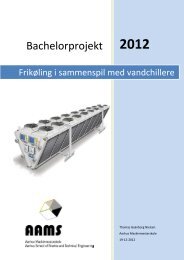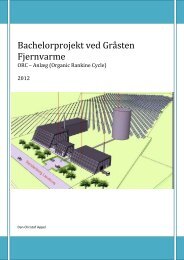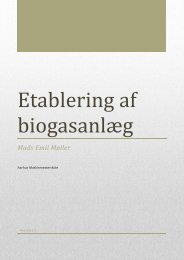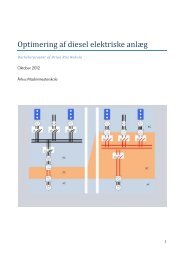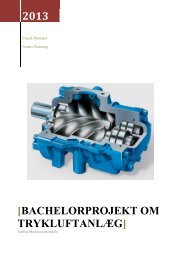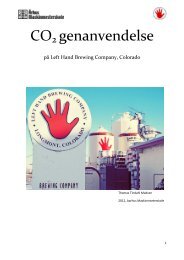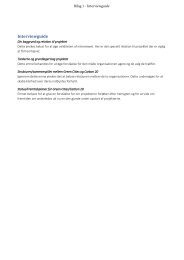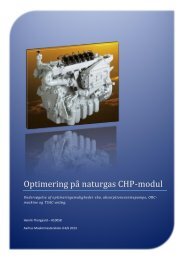Primærluft i CHP.pdf
Primærluft i CHP.pdf
Primærluft i CHP.pdf
Create successful ePaper yourself
Turn your PDF publications into a flip-book with our unique Google optimized e-Paper software.
Abstract<br />
This thesis is made as the final part of my education as Bachelor of Marine and Technical Engineering. In<br />
extension of my internship at a waste fired <strong>CHP</strong> (combined Heat and Power plant). The plant is situated<br />
in Aalborg a city in Northern Jutland of Denmark.<br />
The primary fuel is household waste alongside with industrial waste, from a wide variety of firms. The<br />
Company Reno-Nord I/S that runs the plant is also responsible for a Landfill where storages of<br />
contaminated waste is carried out as they are responsible for the burning of dangerous waste.<br />
Reno-Nord I/S is organized as a partnership with a politically appointed board. The partner<br />
municipalities are Brønderslev, Jammerbugt, Mariagerfjord, Rebild and Aalborg municipalities.<br />
The energy that comes from burning the waste is exploited for two purposes. Namely Production of<br />
Electricity and District heating. The Electricity is sold on the free marked and the heat is transferred and<br />
sold to Aalborg district heating Company.<br />
The process of making this to products is when the waste I burned in the Plant, the heat from the fire<br />
produces steam. The steam then drives a Turbine, this drives a Generator that produces electricity.<br />
Upon this the steam partially condensates, bough the rest steam and the condensate is heat exchanged<br />
for the district heating.<br />
During the Internship it became clear that the primary air supply for the Furnace did not have the right<br />
temperature. It should have a temperature of 145° C but at the time of my intership it had fallen to<br />
around 105° C. I went about the problem in a deductive manner. What could be the reason for this<br />
temperature drop? Can the problem be rectified or optimized?<br />
This thesis analyses on the above mentioned problem. And some models for rectifying and optimizing<br />
around this problem are set forward. Also the way the primary air flow is heated is rethought specially<br />
the drying of the waste on the first grate in the furnace. For this I set a theory that might deliver a<br />
further NOX reduction.<br />
It is then concluded that the most sensible method of rectifying the problem.<br />
3 | S i d e


